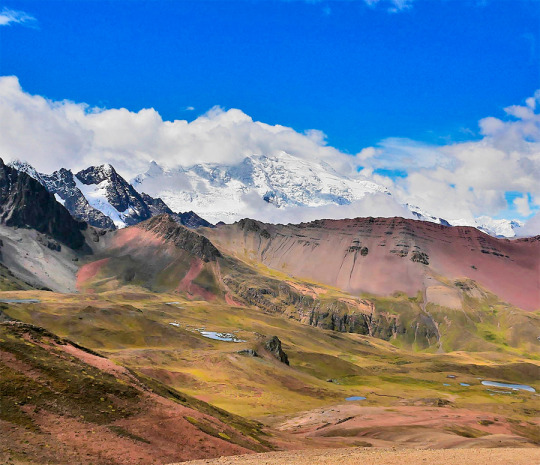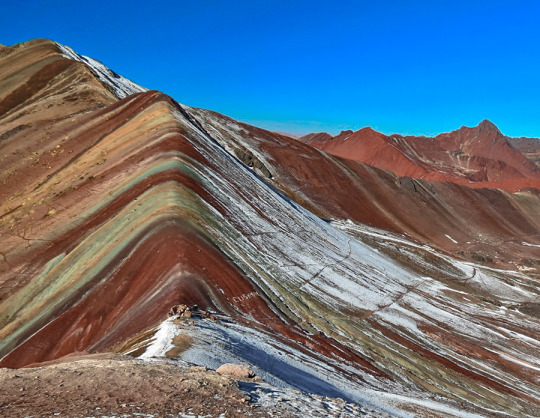The Vinincunca mountain of colors has come to fame very quickly, becoming one of the most visited tourist places in Peru by tourists from all over the world, for the great attraction of its colors and its beautiful landscape view of its snow-capped mountains that has captivated More than one visitor, if we look up at the horizon we will be able to see the rocky mountains, the red valley, that if they could speak for sure they would tell us a lot of stories from past times and tourists who visit it day by day. RAINBOW MOUNTAIN INFORMATION:

The concern to know the reason for its colors leads us to ask ourselves many questions and to obtain the answers we go back to approximately 24 million years ago.
Rainbow Mountain Formation Processes
The formation of the 7-color mountain according to studies dates from the Campanian era, which is part of the geological era belonging to the Cretaceous; where the continents were already separated and many of them covered with seas, so the seven-colored mountain was also covered with shallow sea.
Geological era of the Cretaceous and Paleocene
After many millions of years the Cretaceous geological era goes down in history with the extinction of the dinosaurs, as a result of the fall of a meteorite, so the climatic conditions begin to change and some seas dry up, that is where the geological era of the paleócene many mountains covered with sea are discovered and among them the mountain of seven colors appears, the mountains that appeared in the light were massive rocks that with the climatic conditions of many millions of years these have been eroding and becoming different colors according to its composition elements.
If we visit the Vinincuca mountain and approach the safety rope that protects the mountain, we will be able to observe that it is not really fine colored sand as we might think, but rather it is particles of rocks in the process of erosion.
If we do not have the opportunity to get closer to the mountain, we can be very observant along the way, we will surely find some eroded colored rocks, there we can better observe and feel them.

Among its colors we can find the following composition:
- Pink color: Composition of red clay, mud and sand.
- Off-white color: White quartz sandstones
- Brown, brown and purple color: Composed of limonites and marls, rich in calcium carbonate.
- Red color: Composed of clays and clays rich in iron
- Green color: Composed of phyllites and clays rich in magnesium iron.
- Brown color: They are earthy is a product of rock fanglomerate with magnesium.
- Mustard yellow color: Composed of calcareous sandstones rich in sulfur minerals.












0 comments:
Post a Comment